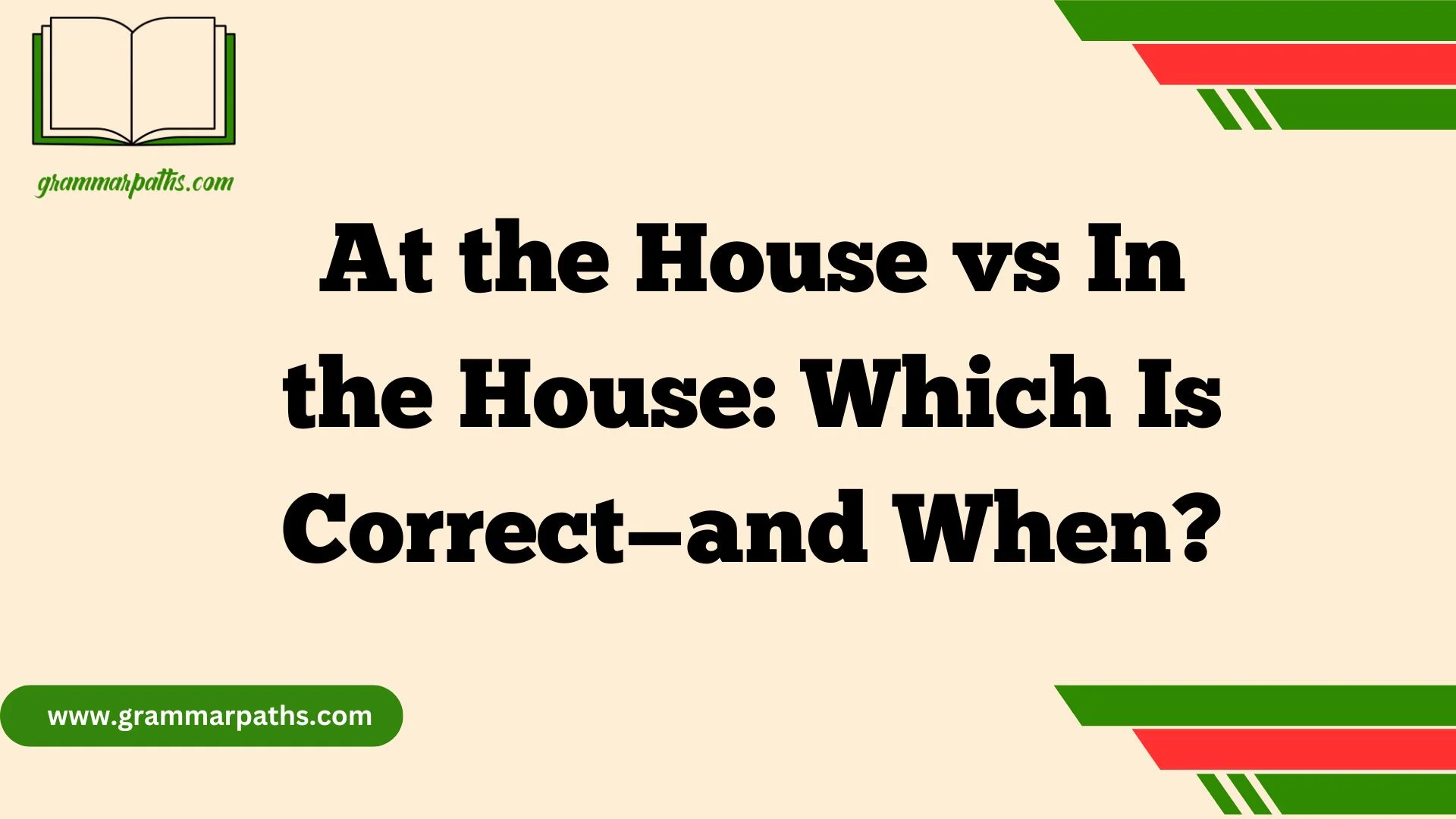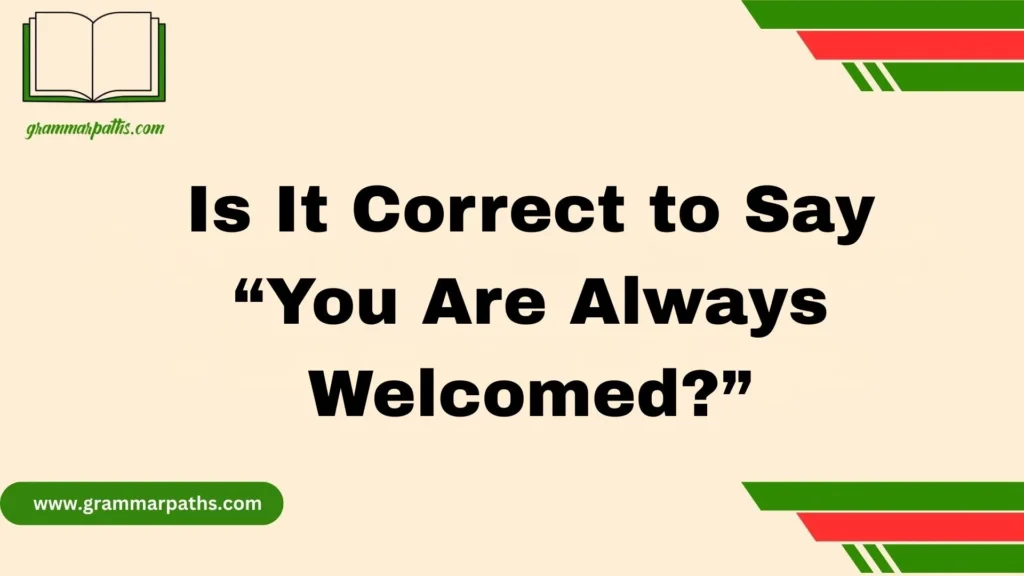Many English learners often wonder whether to say “At the House” vs “In the House”. While both are grammatically correct, their meanings and usage vary depending on context. Understanding the difference between prepositions of place like “at” and “in” is key to mastering natural English.
The phrase “in the house” typically refers to being inside the structure or physically within the building, while “at the house” can indicate being near, outside, or generally located at the property. Knowing when to use each phrase helps improve spoken and written English, especially in everyday conversations and descriptive writing.
This article explores the proper usage, provides real-life examples, and clarifies common mistakes. Whether you’re learning English or refining your skills, this guide will help you use these expressions with confidence and accuracy.
Understanding the Prepositions: What Does “At” Mean?
The word “at” is a preposition that generally refers to a specific point or location, often focusing on the general area rather than the inside of a place. When you say “at the house,” you emphasize being near or outside the house, not necessarily inside it.
- Example:
“I’ll wait at the house.”
This suggests you might be standing outside the building, maybe on the porch, driveway, or front yard. - Key point: “At” points to the location or meeting point without specifying entry inside the structure.
Common Uses of “At the House”
- To indicate meeting places: “Let’s meet at the house before heading out.”
- To describe proximity: “There was a party at the house next door.”
- To mark general locations without specifying being indoors.
Understanding the Prepositions: What Does “In” Mean?
On the other hand, “in” places the focus inside a physical boundary. When you say “in the house,” it means you are physically inside the walls of the house. This preposition leaves no ambiguity about being indoors.
- Example:
“She’s in the house.”
This clearly indicates she is inside the building. - Key point: “In” conveys interior presence, whether in a room, a building, or any enclosed space.
Common Uses of “In the House”
- To talk about activities happening indoors: “We stayed warm in the house during the storm.”
- To indicate someone’s location inside: “He’s in the house, watching TV.”
- To describe physical presence within the house’s walls.
Side-by-Side Comparison: At the House vs In the House
| Preposition | Meaning | Example | Use Case |
| At | Near or by the house, outside | “I’ll wait at the house.” | Meeting point, general location |
| In | Inside the house’s structure | “We are in the house.” | Activities, physical presence |
This table summarizes the basic difference in meaning and typical use cases for each phrase.
Native Speaker Insights: How Do People Really Use It?
In everyday English, native speakers follow these preposition rules quite naturally, but the nuances vary by region and context.
- British English tends to keep the distinction clearer. You’re more likely to hear “meet me at the house” when referring to a spot near or outside the building, and “in the house” strictly for being indoors.
- American English speakers sometimes blur the lines, using “at the house” more loosely to mean “at the location,” whether inside or just outside. Context often fills the gap.
Quote from a linguist:
“Prepositions are tricky because their use is often idiomatic and context-dependent. However, with ‘at’ and ‘in,’ the difference boils down to proximity versus enclosure.” — Dr. Anna Lewis, Language Researcher
Common Mistakes & Misunderstandings to Avoid
People frequently misuse these prepositions, which can cause confusion or awkward phrasing.
- Saying “I’m cleaning at the house” when you mean you’re inside tidying up is inaccurate. The better phrase: “I’m cleaning in the house.”
- Using “in the house” to describe meeting someone outside or at the doorstep leads to confusion.
- Confusing “at home” with “in the home”—native speakers almost always say “at home” even when inside their house. Saying “in the home” sounds formal and unusual.
Contextual Clues & Examples to Clarify Usage
To fully grasp when to say “at the house” versus “in the house,” consider these real-life dialogue snippets:
- Example 1:
A: “Where should I meet you?”
B: “At the house, by the front gate.”
(Outside or near the property) - Example 2:
A: “Is she inside?”
B: “Yes, she’s in the house.”
(Clearly indoors)
Mix-and-Match Usage
| Scenario | Correct Phrase | Explanation |
| Waiting on the porch | “I’m waiting at the house.” | You’re outside but near the house. |
| Doing laundry inside | “I’m in the house doing laundry.” | Inside the building doing an activity. |
| Party happening indoors | “The party is in the house.” | Emphasizes being inside the house’s walls. |
| Meeting outside before going in | “Meet me at the house first.” | General meeting point outside or nearby. |
Regional and Register Differences
English speakers from different regions or backgrounds may lean toward different usages.
- British English users make a clearer distinction between “at” and “in” when talking about houses.
- American English often uses “at the house” more broadly, expecting context to clarify.
- Formal writing prefers precise use, while casual speech is more forgiving.
Quick Reference Summary: When to Use “At” vs “In” the House
| Use “At the House” When… | Use “In the House” When… |
| You mean outside or near the house. | You mean physically inside the house. |
| Referring to meeting points or locations. | Talking about activities inside. |
| Describing proximity, not entry. | Indicating someone’s location indoors. |
Frequently Asked Questions (FAQs)
Which is correct: “at house” or “in house”?
Neither is correct without an article or possessive. You must say “at the house” or “in the house.” Saying just “at house” is grammatically incorrect in English.
Do we say “at my house” or “in my house”?
Both are correct but mean different things.
“At my house” means you’re at or near the location; “in my house” means you’re physically inside it.
Is it located in or at the house?
Use “at the house” to refer to a general location.
Use “in the house” if you want to specify that something is inside the structure.
What is the difference between “at home” and “in the house”?
“At home” is an idiomatic phrase meaning you’re home, whether inside or nearby.
“In the house” specifically means you are inside the building, not outside or nearby.
Are you at home or at home?
The correct phrase is “at home.”
“In home” is grammatically incorrect unless used in rare formal contexts like “in-home care.”
Conclusion: Make Your Choice Based on Location
In conclusion, both “At the House” and “In the House” are correct, but their usage depends on context and the specific meaning you want to convey. Use “in the house” when referring to someone or something inside the physical structure, and “at the house” when speaking about someone being at the location, either inside or nearby.
Understanding the difference between these prepositions is essential for improving your English grammar and communication skills. By learning how and when to use each phrase, you’ll sound more natural and fluent in both spoken and written English.
Keep practising with real-life examples, and soon this distinction will become second nature. Whether you’re writing a story or having a conversation, choosing the right phrase will make your language more precise and clear.

Grace Marie is the dedicated writer behind GrammarPaths.com, where she shares her passion for English grammar, idioms, and writing mastery. With a strong background in language studies and years of experience helping learners improve their communication skills, Grace creates clear, practical, and engaging content that makes English easy to understand.












